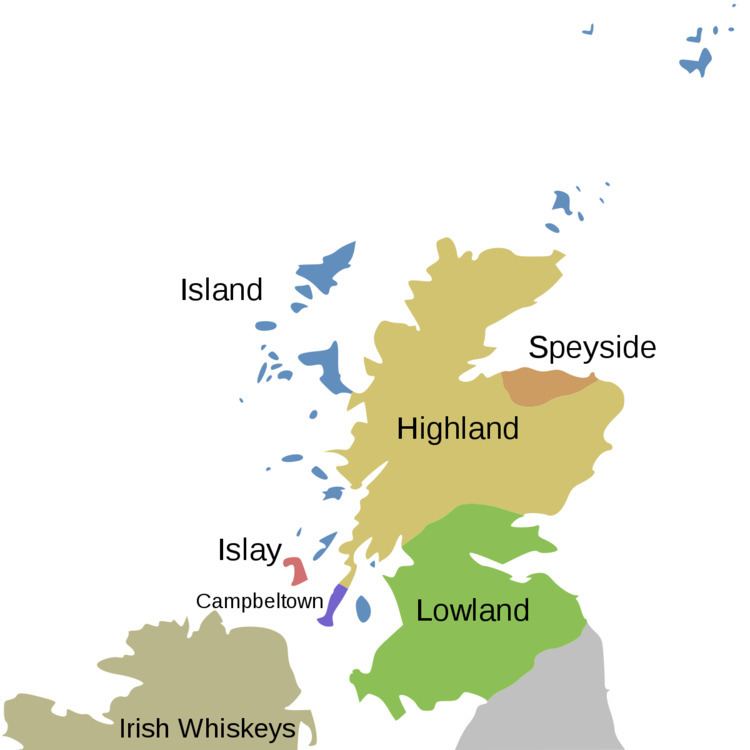 | ||
Islay whisky is Scotch whisky made on Islay (/ˈaɪlə/ EYE-lə) or Ìle in Gaelic, one of the southernmost of the Inner Hebridean Islands located off the west coast of Scotland. Islay is one of five whisky distilling localities and regions in Scotland whose identity is protected by law. There are eight active distilleries and the industry is the island's second largest employer after agriculture. Islay is a centre of "whisky tourism", and hosts a "Festival of Malt and Music" known as Fèis Ìle each year on the last week of May, with events and tastings celebrating the cultural heritage of the island.
Contents
Styles of whisky
The whiskies of the distilleries along the southeastern coast of the island, Laphroaig, Lagavulin, and Ardbeg, have a smoky character derived from peat, considered a central characteristic of the Islay malts, and ascribed both to the water from which the whisky is made and to the peating levels of the barley. Many describe this as a "medicinal" flavour. They also possess notes of iodine, seaweed and salt. Caol Ila, on the northern side of the island, across from Jura, also produces a strongly peated whisky. Trees, other than plantations, on these islands are scattered and the peat is free of rotting wood. (Normal peat bogs are invaded by trees and periodic fires kill the encroaching tree line.) Islay peat is reputedly the best flavoured for scotch production.
The other distilleries on the island make whisky in a variety of styles. Bunnahabhain makes much lighter whiskies which are generally lightly peated. Bowmore produces a whisky which is well balanced, using a medium-strong peating level (25 ppm) but also using sherry-cask maturation. The newest distillery, Kilchoman, started production in late 2005. In location it is unlike the other seven distilleries, which are all by the sea.
Closed distilleries
The oldest record of a legal distillery on the island of Islay refers to Bowmore in 1779 and at one time there were up to 23 distilleries in operation. For example, Port Charlotte distillery operated from 1829 to 1929 and Port Ellen is also closed although it remains in business as a malthouse that supplies many of the Islay distilleries.
In March 2007 Bruichladdich Distillery announced the reopening of the distillery at Port Charlotte (Port Sgioba in Gaelic), which was closed in 1929, and was also known as the Lochindaal distillery.
